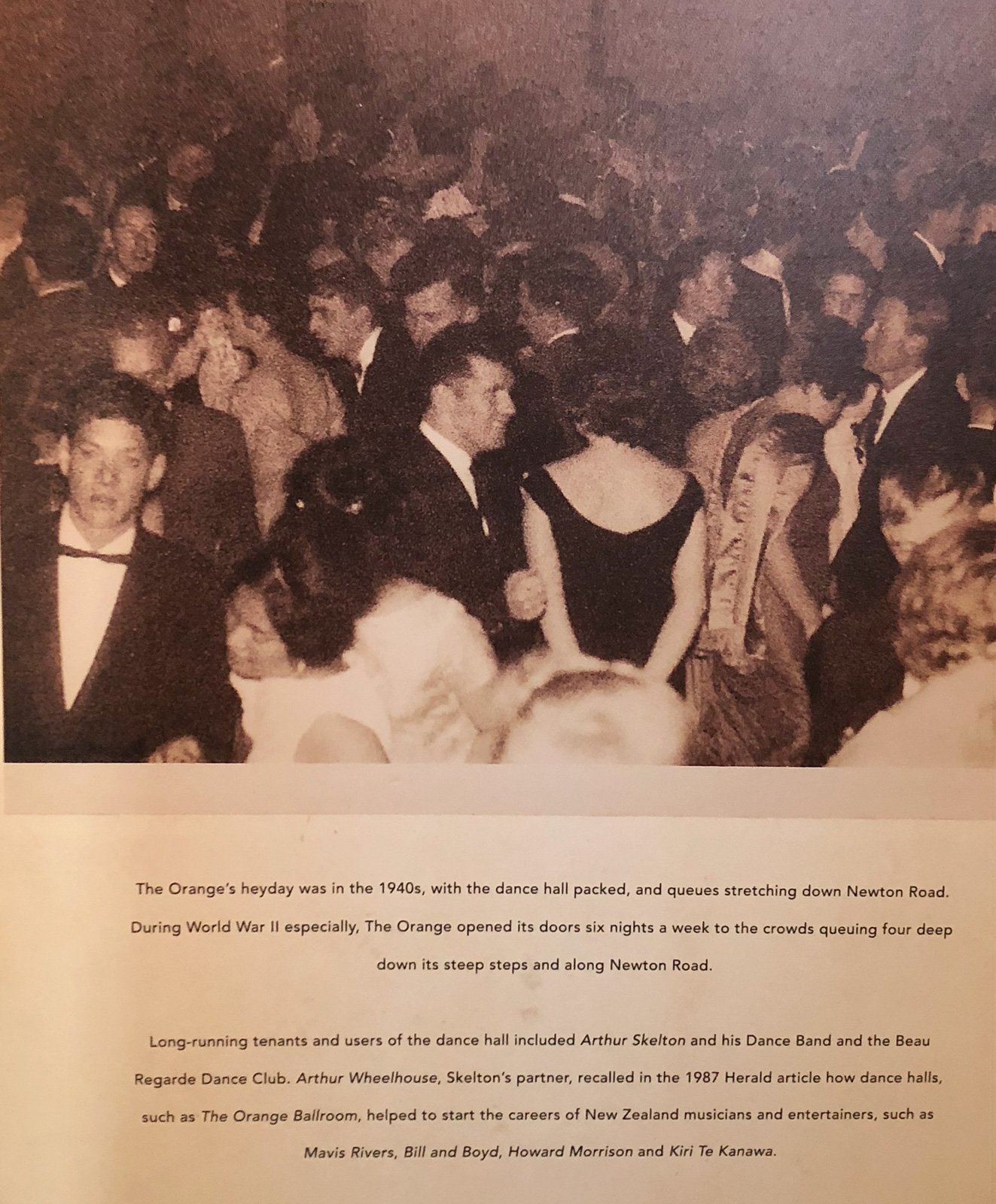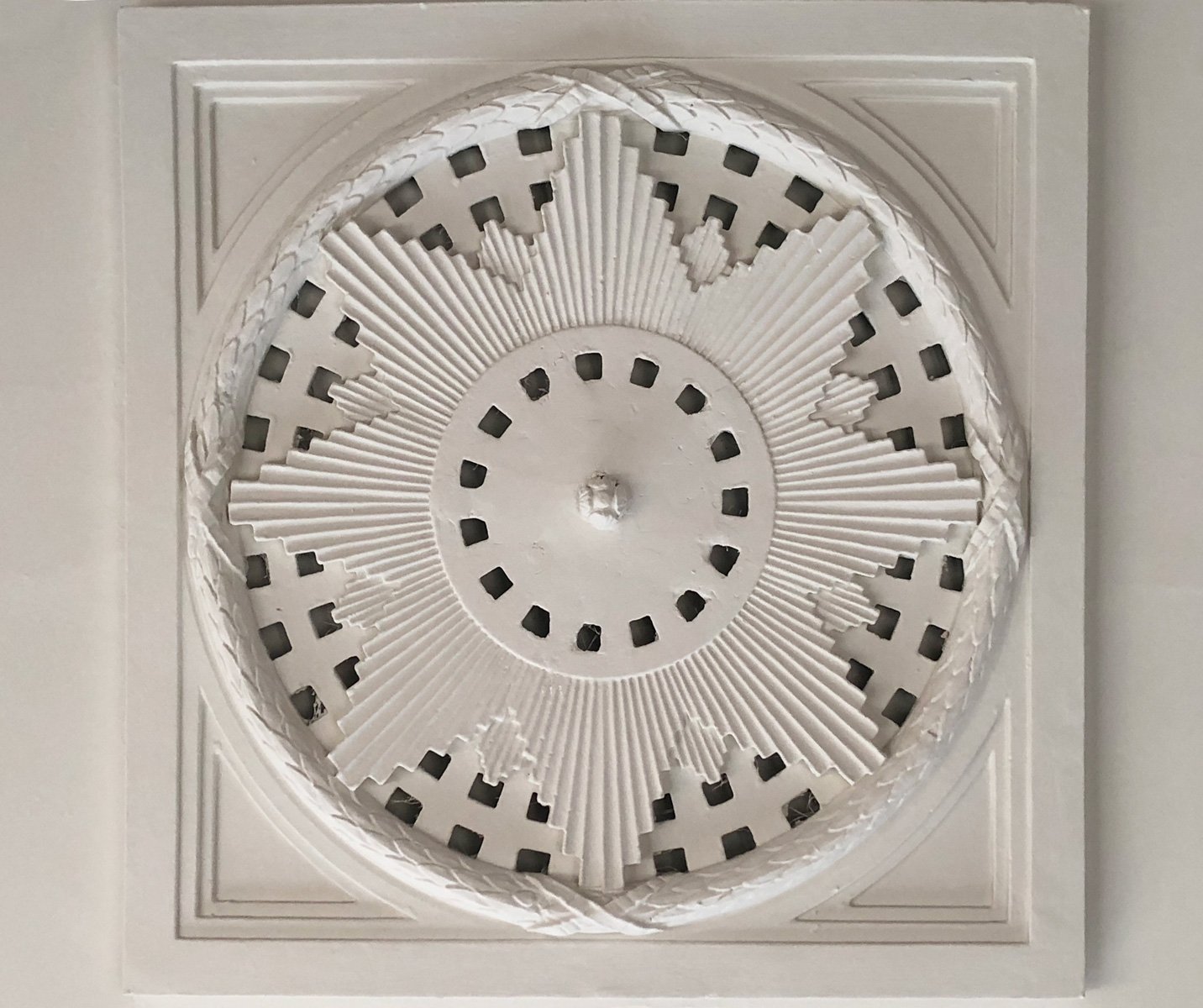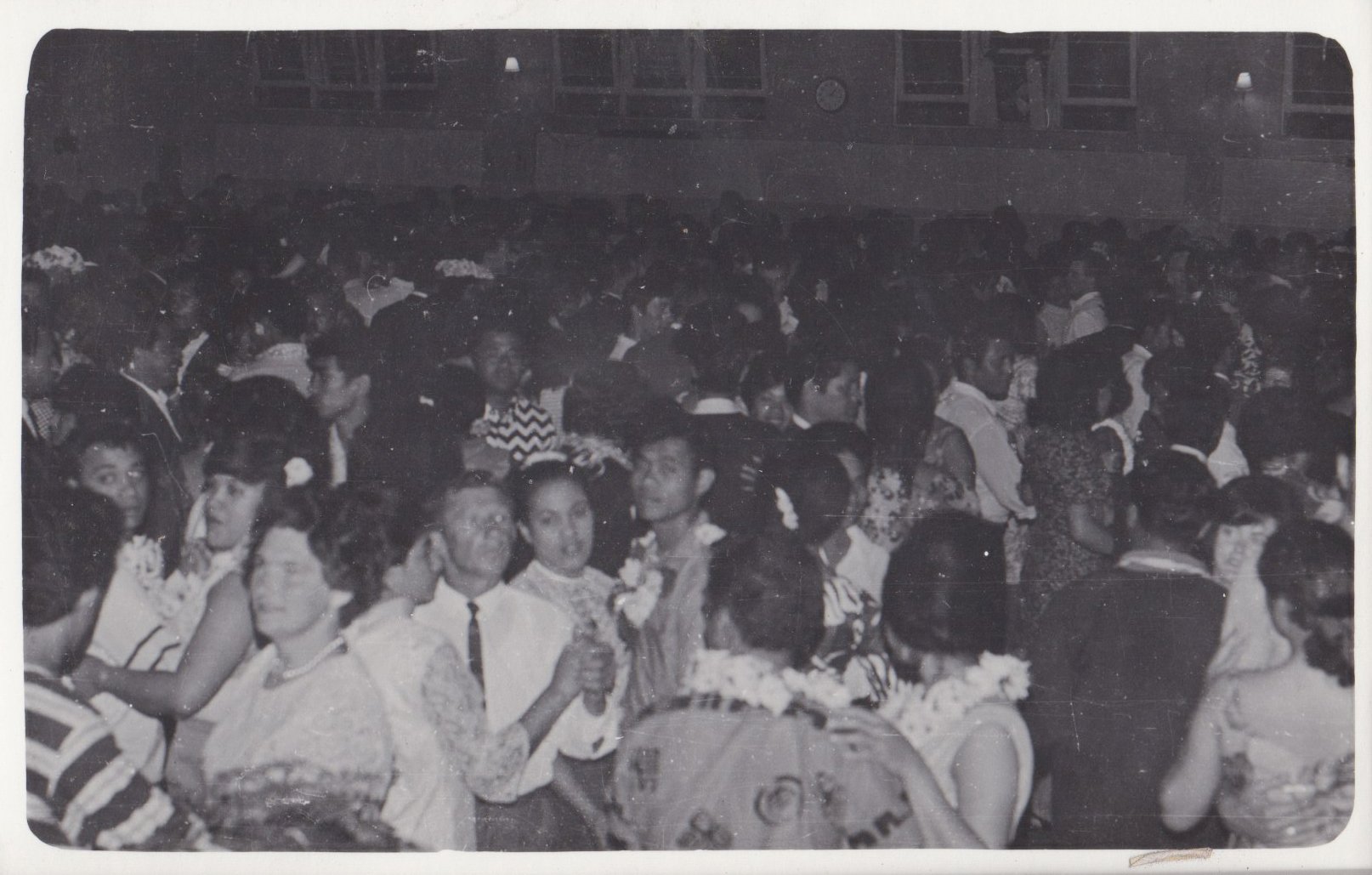
The Orange Hall Days.
Bill Sevesi played at the Orange for 23 years from 1958 to 1981.
The Orange Hall, or the ‘Orange’ as it was simply known, was immortalised in the 1958 Peter Cape song Down the Hall on Saturday Night mentioned in the line: “We’re as slick as the Orange in Auckland.”
Before the advent of television and other forms of entertainment in the latter half of last century, ballroom dancing was a popular and regular social event with the Orange’s dance floor - thought to be sprung and made of tawa - regarded as the best in Auckland.
The Orange’s heyday was in the 1940s. During World War II, the Orange opened its doors six nights a week to crowds who queued four-deep down its steps and along Newton Rd. It was one of the institutions that helped launch the careers of performers such as Dame Kiri Te Kanawa and the late Sir Howard Morrison. The supper room below the dance hall area served sandwiches, cakes, tea and coffee for the crowds until the 1980s. No alcohol was allowed on the premises by the owners, the Auckland Orange Hall Society. NZHerald Article 2010.
Long-running tenants and users of the dance hall included Arthur Skelton and his Dance Band and the Beau Regarde Dance Club. Joe Wheelhouse, Arthur Skelton's partner, recalled in the 1987 Herald article how dance halls, such as the Orange Ballroom, helped to start the careers of New Zealand musicians and entertainers, such as Mavis Rivers, Bill and Boyd, Howard Morrison and Kiri Te Kanawa.
Tom Sharplin is said to have developed his distinctive ‘one legged’ rock and roll style at The Orange. Bill Sevesi, who received the Pacific Islands Artist Award in 1997 for his contribution to the development of the Pacific Islands arts in New Zealand, played at the Orange for 23 years from 1958 to 1981.
Bill spent around 4 years helping to clean up the Orange Hall, like:
Getting the ventilation fans working again;
Installed flicking electric lights;
Moving the bandstand to the corner to create more dancing room;
Hired a fireman to legally allow more people to come in; average numbers each Saturday night were around 700-800 people. One night they packed in 1700 people!
He also installed electric heaters; painted the walls in the dance hall;
Built and installed a good P.A. system;
Increased his 5 piece band to 8 piece;
Then hired floor shows which had Jim Sutton from 1ZB announce one night.
The supper room below the dance hall area catered for the crowds and even up to the late 1980s still served sandwiches, cakes, tea and coffee. No alcohol was allowed on the premises by the owners - the Auckland Orange Hall Society.
The advent of late night closing and bands in pubs signalled the beginning of the end of an era for dance halls, and 1987 saw the ‘last waltz’ in the Orange ballroom. In subsequent years it was occupied by the Performing Arts School, who repainted its trademark interior orange colour cream, and in more recent years by the City Christian Church.
The Orange Hall was built in a number of stages. The original hall was designed in 1922 by A. Sinclair O'Connor and completed the following year for the Orange Lodge which was established in Auckland in 1840. The 743 square metre building is located on Newton Road.
The rejuvenation of the area has extended into Newton Road with the old Masonic Hall adjacent to Orange hall having been refurbished and transformed into the Roundhouse recording studios by Neil Finn.
From Left: Dave Paul, Bill Sevesi, Freddie Keil, Buddy Wilson, John Moore (drums), John Brooky, Bobby Wynard, Malu Natapu (slightly off shot).
Looking down onto the ballroom floor. How on earth did they fit up to 1700 people? The 1950s sprung flooring in the main hall. The removal of the annexe allowing for more natural light to come in as part of the renovation.
From Left: Ben Tawhiti, Bill Sevesi, John Moore (drums), John Brookie, xxx and Malu Natapu.
Ceiling panels in the top floor.
Eldest daughter Tania and mum Vika (Bill’s wife) on visiting the renovated Orange Hall on 17th July 2018 thanks to Tony Smith of Burwood Orange Ltd, which started around 2006.
The development, by Crosson Clarke Carnachan Architects & Tonkin Zulaika Greer Architects in association, and Dave Pearson Architects, has received a heritage architecture award.
Bill’s wife Vika admiring the displays inside the Orange on 17th July 2018.
Looking out from ballroom into the foyer.
Typical Saturday night at the Orange, 1960s. They danced, they fell in love and made families. Truly the good old days.
Orange Ballroom, 1950s sprung flooring.
Malu Natapu, Al Paget, xxx, Hugo Spemann and xxx.
Quality wooden wall panelling, room in top floor of Orange Hall.
Orange Ballroom, with Alex Johannson in the centre - Sione Aleki’s father.
Main doors looking out.
The developers and architects have worked hard to keep as many original features as possible. The ticket office window here.




















